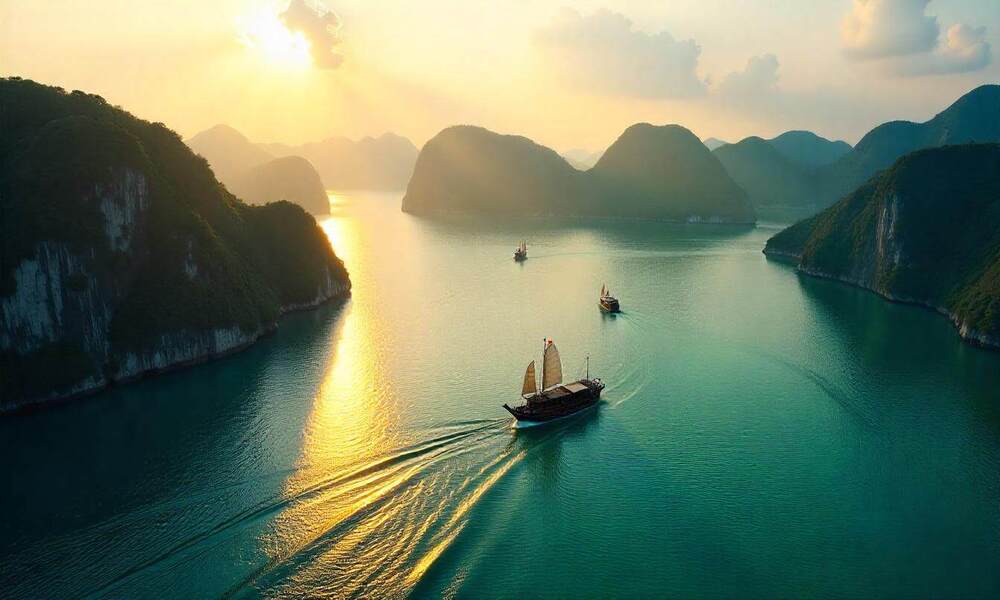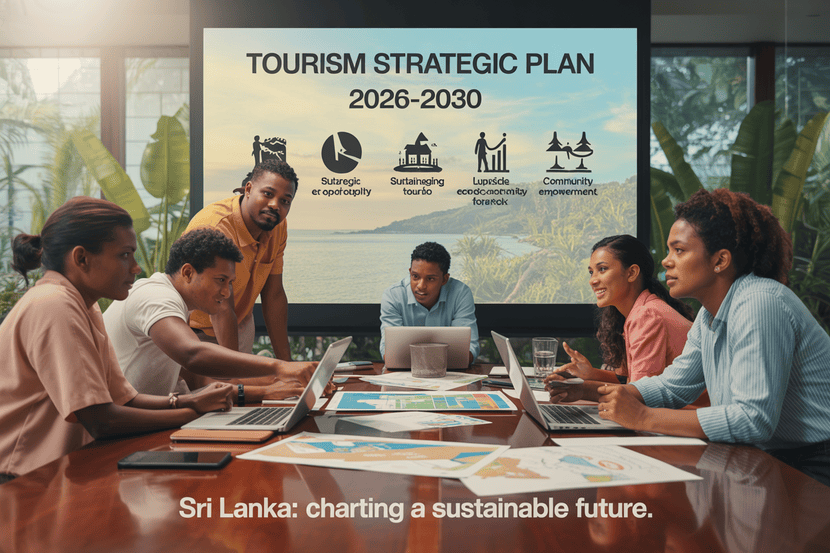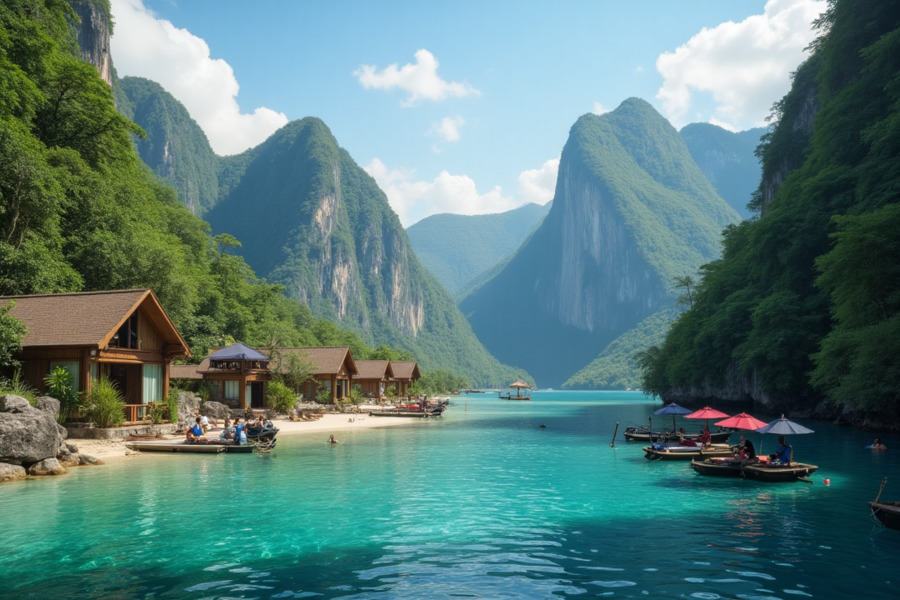≡-Vietnam Strengthens Marine Protection Efforts To Ensure Long-Term Sustainability Of Tourism And Preserve Coastal Ecosystems – Viral of Today
<> Viral of Today <>
Home » TOURISM NEWS » Vietnam Strengthens Marine Protection Efforts To Ensure Long-Term Sustainability Of Tourism And Preserve Coastal Ecosystems Monday, July 7, 2025Marine tourism generates as much as 70% of the industry’s overall revenue, playing a crucial role in both local and national economic development.Marine tourism has emerged as a significant driver of the nation’s tourism industry, accounting for up to 70% of the sector’s total revenue. The vast network of beaches, islands, and pristine coastlines, coupled with an increasing demand for seaside leisure activities, positions marine tourism as a vital contributor to both local and national economic development. This booming industry, however, has brought its share of challenges. The rapid growth of marine tourism has strained the environment, leading to concerns about sustainability and the long-term preservation of vital natural resources. In light of these challenges, local authorities and tourism businesses are working diligently to implement sustainable solutions to balance economic growth with environmental protection.Tackling Marine Pollution and Ensuring Sustainable GrowthAs the number of visitors to coastal regions increases, so does the pressure on the environment. Issues such as plastic waste, coral reef degradation, and the destruction of marine ecosystems have become more pronounced, threatening the very resources that attract tourists in the first place. The Vietnam Institute for Tourism Development Research (ITDR) has raised alarms about the growing impact of plastic waste, forecasting that tourism-related plastic waste could increase threefold by 2030, potentially reaching an alarming 336,400 tonnes annually. The increase in waste emphasizes the critical need for improved waste management strategies and stronger regulations to reduce tourism’s environmental footprint.In response to these concerns, various initiatives focused on marine ecosystem restoration have achieved notable success. For example, in Nha Trang Bay, over 15 hectares of coral reefs have been revived since 2015 through concerted restoration efforts. Similarly, the Cu Lao Cham Marine Protected Area, which spans over 16,000 hectares, has been preserved thanks to a collaborative effort involving local authorities, fishermen, and non-governmental organizations (NGOs). These projects not only help restore the natural beauty of these areas but also ensure that tourism activities remain sustainable and beneficial to the local communities.Cu Lao Cham, for instance, receives over 200,000 visitors annually and generates about 30 million USD in revenue each year. The site’s successful combination of tourism and conservation has proven that it is possible to generate income while also preserving the long-term ecological health of marine environments. The model emphasizes that tourism and sustainability can go hand in hand when managed properly.Community Participation and Public AwarenessOne of the key elements driving the success of Vietnam’s marine conservation efforts is community involvement. Local residents, NGOs, and volunteers play a critical role in helping preserve the country’s natural resources. Programs like GreenHub’s “Joining Hands for A Blue Sea” have mobilized thousands of volunteers across Da Nang, Quang Nam, and Phu Yen, leading beach clean-up efforts and raising awareness about the importance of preserving the environment. Such initiatives not only remove waste from popular tourist destinations but also educate the public on the environmental impact of tourism.In addition to community-driven programs, Vietnam has seen a surge in eco-conscious travelers who are making conscious decisions to minimize their environmental footprint. Tourists are increasingly choosing eco-friendly tours and accommodations that prioritize sustainability. Many travelers are also avoiding single-use plastics, bringing reusable items like water bottles, and opting for activities that have a minimal environmental impact. This growing demand for sustainable tourism options is reshaping the tourism industry, encouraging operators to adopt greener practices and prioritize environmental stewardship.On June 8, nearly 10,000 volunteers participated in the “Act for a Blue Sea” campaign, organized by the For Green Future Fund, in collaboration with various local organizations. The volunteers collected 72 tonnes of waste from beaches across 28 coastal provinces, covering a total area of 17 hectares. These large-scale clean-up efforts are essential not only for keeping Vietnam’s beaches pristine but also for cultivating a culture of environmental responsibility among the local population and tourists alike. By engaging in such activities, participants help foster a deeper sense of connection to the environment, encouraging lasting behavioral changes that can positively impact the future of marine tourism.Policy Support and National EffortsAcknowledging the significance of sustainable tourism, the Vietnamese government has introduced various policies to tackle plastic pollution and encourage eco-friendly travel practices. The Ministry of Culture, Sports, and Tourism has set a goal to eliminate single-use plastics at tourist sites and accommodations by 2025. These regulations align with global sustainability goals and reflect Vietnam’s commitment to reducing the environmental impact of tourism while enhancing its reputation as a destination for eco-conscious travelers.Furthermore, local governments are being encouraged to enforce stricter waste management practices, such as improved waste separation and recycling systems, to handle the increasing volume of tourism-related waste. In addition, tourism operators are being urged to find alternatives to plastic, such as offering sustainable packaging or switching to biodegradable materials in their operations. The goal is to ensure that the tourism sector continues to thrive without sacrificing the health of the environment or the quality of the experience for future generations.Towards a Sustainable Coastal FutureExperts agree that the future of marine tourism in Vietnam hinges on the cooperation of all stakeholders, including the government, local communities, businesses, and tourists. Achieving long-term sustainability will require continued investment in eco-tourism, green technology in waste management, and enhanced public education on environmental conservation. By creating a shared responsibility for preserving the nation’s coastal and marine resources, Vietnam can safeguard its natural heritage while ensuring the continued success of its tourism sector.The Vietnam Tourism Association has called for greater collaboration between local governments and tourism operators to find innovative solutions to reduce plastic use and preserve the marine environment. As Vu The Binh, the president of the association, emphasized, marine conservation is not only a responsibility of the tourism industry but also a shared duty of individuals, locals, and tourists. Everyone must play their part in ensuring that the resources that drive the industry are preserved for future generations.By protecting Vietnam’s marine environment today, the country is ensuring that future generations will be able to enjoy its pristine beaches, clear waters, and rich biodiversity. Sustainable practices, responsible tourism, and continued conservation efforts are essential to maintaining the natural beauty that has made Vietnam one of Southeast Asia’s top travel destinations. This proactive approach ensures that Vietnam’s coastal regions can continue to welcome visitors from around the world while preserving their environmental integrity for years to come.«Enjoyed this post? Never miss out on future posts by following us»
This information will surprise you!
See also
- Read until the end to discover everything.
- Important information you need to know.
- Interesting facts and helpful tips.
Conclusion
Did you enjoy the news? Keep following us daily!













